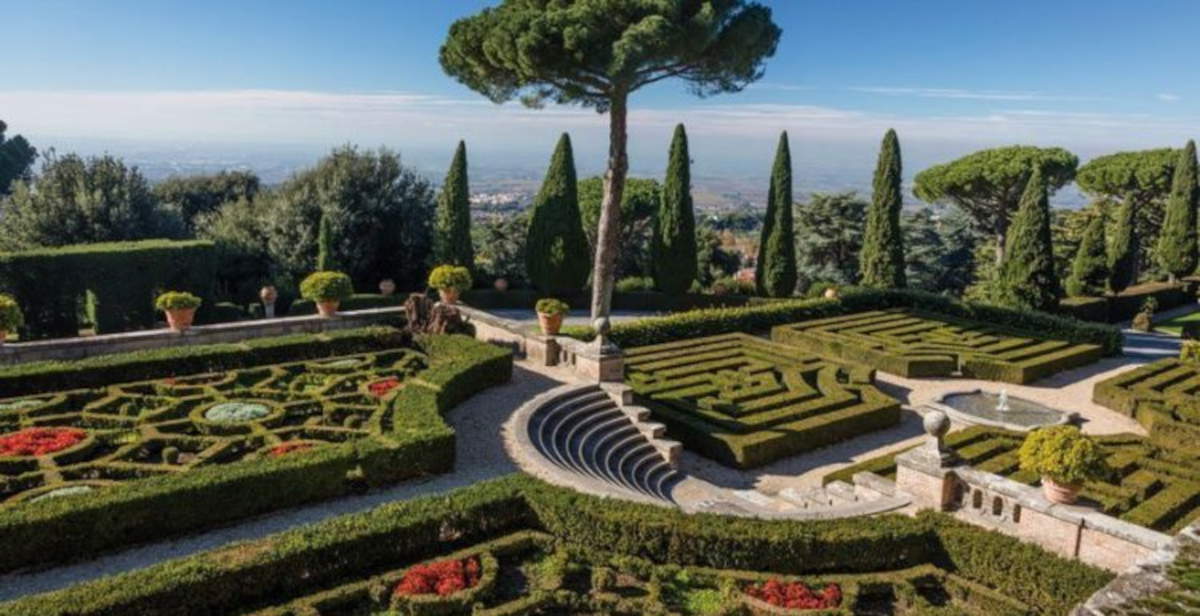The Polo Museale delle Ville Pontificie of Castel Gandolfo in Rome will remain open to the public even during the summer stay of Pope Leo XIV, scheduled in two periods: from July 6 to 20 and from August 15 to 17. The Pope’s stay will therefore not compromise visits, albeit with some schedule variations related to the recitation of the Angelus or other public activities. The only exception concerns theAntiquarium on the ground floor, which will be temporarily closed to the public and which houses archaeological finds discovered in the area between 1841 and 1931, as well as the Vatican Specola.
The Papal Villas stand on the remains of theAlbanum Domitiani, the sumptuous residence commissioned by the Roman emperor Caesar Domitian Augustus, who ruled from AD 81 to 96, and which stretched over an area of about 14 square kilometers to Lake Albano. A fortress was built on its ruins in the Middle Ages by the Genoese Gandolfi family, later passed to the Savelli family and finally, in 1604, acquired by the Apostolic Chamber to be used as a summer residence for the popes. The first to want its transformation into a papal residence was Urban VIII, born Maffeo Barberini. The work was entrusted to the architect Carlo Maderno, while the pictorial decorations were taken care of by Simone Lagi.

Over the centuries, various pontiffs helped to expand and enrich the complex. Alexander VII made use of Gian Lorenzo Bernini’s contribution, Clement XIV purchased the nearby Villa Cybo, and Paul V oversaw the restoration of the aqueducts. The historical continuity of the link between the papal seat and the town was then interrupted with the end of the Papal State in 1870, when the Papal Villas were abandoned for about sixty years. In 1929, with the Lateran Pacts, Castel Gandolfo regained its vocation. Restorations were carried out and the three great gardens: that of the Moor, Villa Cybo and Villa Barberini were put in communication. In 1934, moreover, the headquarters of the Vatican Astronomical Observatory, entrusted to the Jesuit Fathers, was moved here because of the increasing nighttime brightness that now compromised observations in the Roman sky. The last pontiff to reside there before Leo XIV was Benedict XVI, who stayed there briefly in 2013, before his move to Mater Ecclesiae Monastery.
Since 2013, Pope Francis has visited Castel Gandolfo on three occasions: first on March 23 of that year, during his predecessor’s stay; then in 2016, when he decided to open the Apostolic Palace to the public; and finally in February 2023, when he promoted the creation of Borgo Laudato Si’, an educational and social project intended for educational initiatives in the gardens of the Papal Villas, including Villa Cybo.

Leo XIV will thus be the 16th Pontiff to stay in the Popes’ historic summer residence. The Pope has already visited Castel Gandolfo twice in recent months: on May 29, when he reached the Borgo Laudato Sì and the Apostolic Palace, and on July 3 for a visit to Villa Barberini, where he will stay during his stay. With its gardens and outbuildings, the palace will thus be reserved exclusively for the papal stay.
In contrast, the rest of the museum complex will remain usable by the public. The centerpiece of the tour route is the Apostolic Palace, which can be accessed by purchasing a ticket at the on-site ticket office or through the official website of the Vatican Museums. The museum itinerary is on two levels. On the second floor you can visit a gallery that collects portraits of popes from the 16th century to the present day. The second floor, on the other hand, provides access to the historical rooms where the daily life of the Pontiffs took place: the Consistory Hall, the Hall of the Palafrenieri, the Throne Room, the Hall of the Swiss, the bedroom, the library, the private study and the chapel, where a copy of the Madonna of Czestochowa is kept.

In addition to the usual spaces, visitors will also have the opportunity to access some areas not normally included in the museum itinerary. These include the little chapel of Urban VIII, the Billiard Room and the Music Room, rooms that give a glimpse of the Pontiffs’ private lives and will be the subject of special tours. Instead, the Vatican Specola, one of the oldest astronomical centers in the world, which is housed in one of the areas of the complex, will remain closed to the public during the entire papal stay. The museum itinerary also offers the opportunity to access the Historical Collections and the new exhibition areas inaugurated in February 2024. Currently included in the ticket are three temporary exhibitions: Bellini and Sodom - Passion of Christ, the exhibition dedicated to Raphael’s tapestry with the Stoning of St. Stephen, and Castel Gandolfo 1944, which commemorates the months when the residence, thanks to its extraterritoriality status, was transformed by Pius XII into a refuge for more than twelve thousand displaced persons. In a context marked by bombings and mourning, including that of February 10 which claimed the lives of more than five hundred people, stories of hope also emerged: about forty children were born in the Pope’s bed, including twins who were named Eugenio Pio and Pio Eugenio in homage to the Pontiff.
 |
| The Pope is on vacation at Castel Gandolfo, but the Polo Museale remains open to the public |
Warning: the translation into English of the original Italian article was created using automatic tools. We undertake to review all articles, but we do not guarantee the total absence of inaccuracies in the translation due to the program. You can find the original by clicking on the ITA button. If you find any mistake,please contact us.